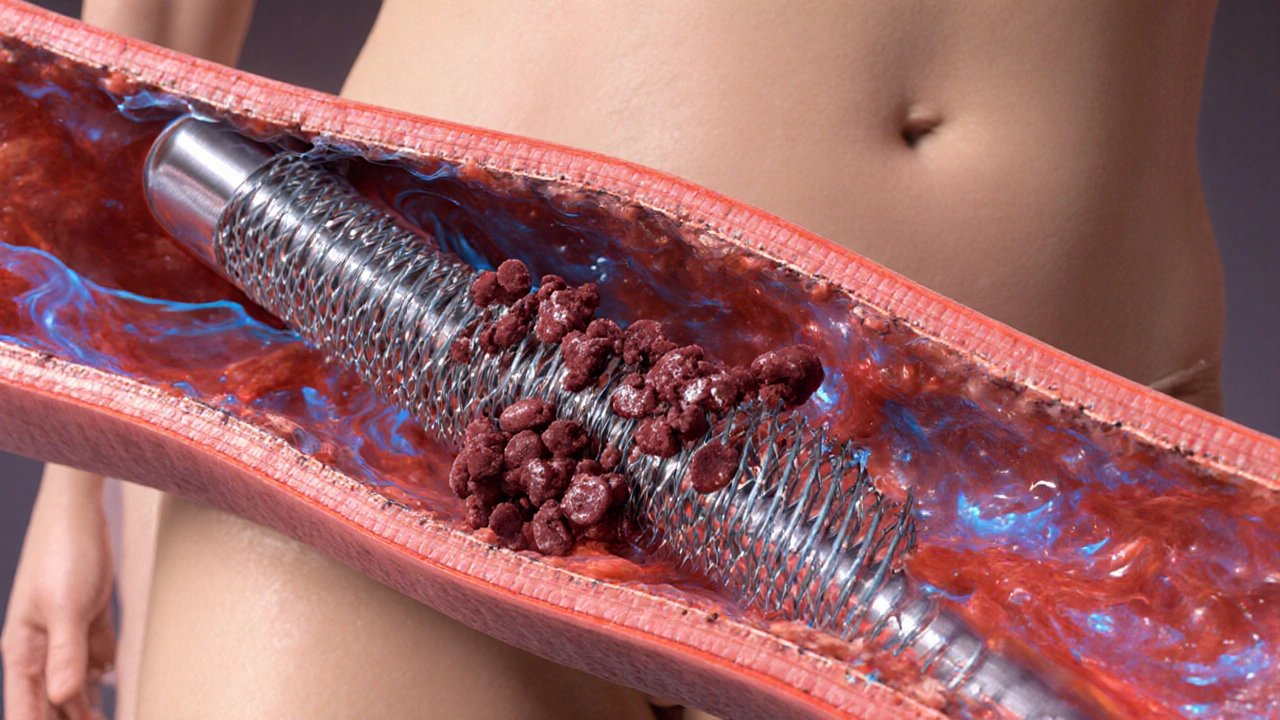Stents: Types, Uses, and What You Need to Know
When working with stents, tiny mesh-like devices inserted into narrowed vessels to keep them open. Also known as vascular implants, they are a cornerstone of modern cardiology and vascular therapy. Coronary artery disease often triggers the need for a stent because plaque buildup narrows heart‑feeding arteries, leading to chest pain or heart attacks. The usual way to get a stent in place is through angioplasty, a minimally invasive balloon‑inflation technique that creates a pathway for the device. Together, these three concepts—stents, coronary artery disease, and angioplasty—form a treatment loop that saves lives and speeds recovery.
Key Considerations When Choosing a Stent
The market offers several stent families, each designed for specific vessel conditions. Bare‑metal stents provide a simple scaffold but can trigger tissue growth that narrows the artery again, a problem known as restenosis. Drug‑eluting stents release medication over weeks to curb that regrowth, making them the go‑to choice for many heart patients. When the blockage sits in a peripheral artery—like the leg’s femoral or popliteal vessels—a peripheral artery disease stent may be needed; these often have greater flexibility to handle knee movement. Bioresorbable stents are an emerging option that dissolve after the artery heals, promising fewer long‑term complications. Selecting the right type hinges on factors such as vessel size, location, patient age, and the risk of bleeding from antiplatelet drugs.
Beyond the heart, stents play a role in other medical fields. Patients on dialysis often require a vascular access stent to keep the fistula or graft open, ensuring reliable blood flow for treatment. Follow‑up care includes imaging checks, medication adherence, and lifestyle tweaks to lower the chance of clot formation. Looking ahead, advances in polymer science and drug delivery aim to make stents even smarter—some prototypes already sense pressure changes and release medication on demand. Whether you’re a patient, a caregiver, or just curious, understanding how stents interact with diseases like coronary artery disease, procedures like angioplasty, and conditions such as peripheral artery disease equips you to make informed health choices. Below you’ll find a curated collection of articles that dive deeper into each of these topics, from early detection strategies to the latest device comparisons.
How Obesity Increases Blood Clot Risk in Vascular Stents
Explore how obesity raises the risk of blood clot formation in vascular stents, the science behind it, and practical steps to prevent and manage thrombosis.
read more

